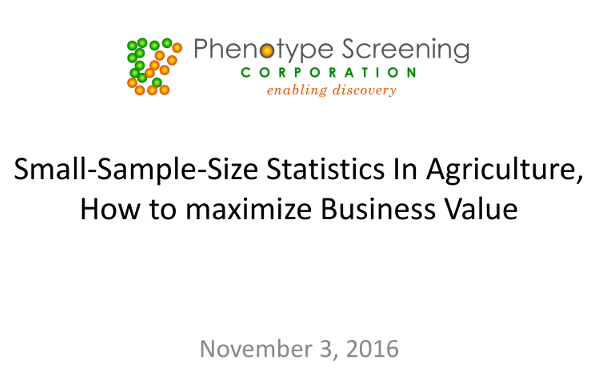
Workshop Highlights: Small-Sample-Size Statistics in Agriculture; How to Maximize Business Value,
held November 3, 2016
Thanks to all of our presenters and attendees for making this seminar a resounding success.
Presentations are available below.
Presentations:
Daniel McDonald, President, Phenotype Screening Corporation,
"Small Sample Size Statistics, Introduction"
(pdf)
(video)
Dr. Ronald Michaels, Technical Director, Phenotype Screening Corporation,
"Decision Making in the Face of Uncertainty"
(pdf)
(video)
Dr. Kater Hake, Vice President Agriculture & Environmental Research, Cotton Inc.,
"What Growers Expect from New Product Introductions and Claims"
(pdf)
(video)
Professor Vasileios Maroulas, The University of Tennessee, Department of Mathematics,
"Foundations of Small-Sample-Size Statistical Inference and Decision Making"
(pdf)
(video)
Dr. Ronald Wasserstein, Executive Director, American Statistical Association,
"Doctor, It Hurts when I p"
(pdf)
(video)
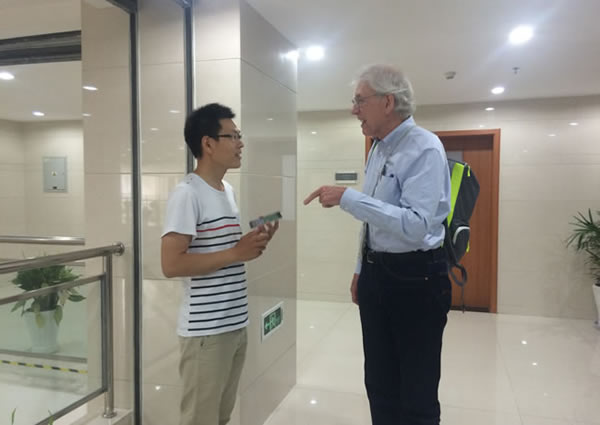
June 2016, Ronald Michaels, Technical Director, participated in Zealquest Scientific Technology Co., Ltd.
2016 Plant Phenotyping Service Week Seminars.
Ron discussed how Phenotype Screening Corporation's x-ray based root imaging technology combined with conventional above ground methods
provides the whole picture of plant growth.
See Ron's presentation here.
Back to Top
2015 News
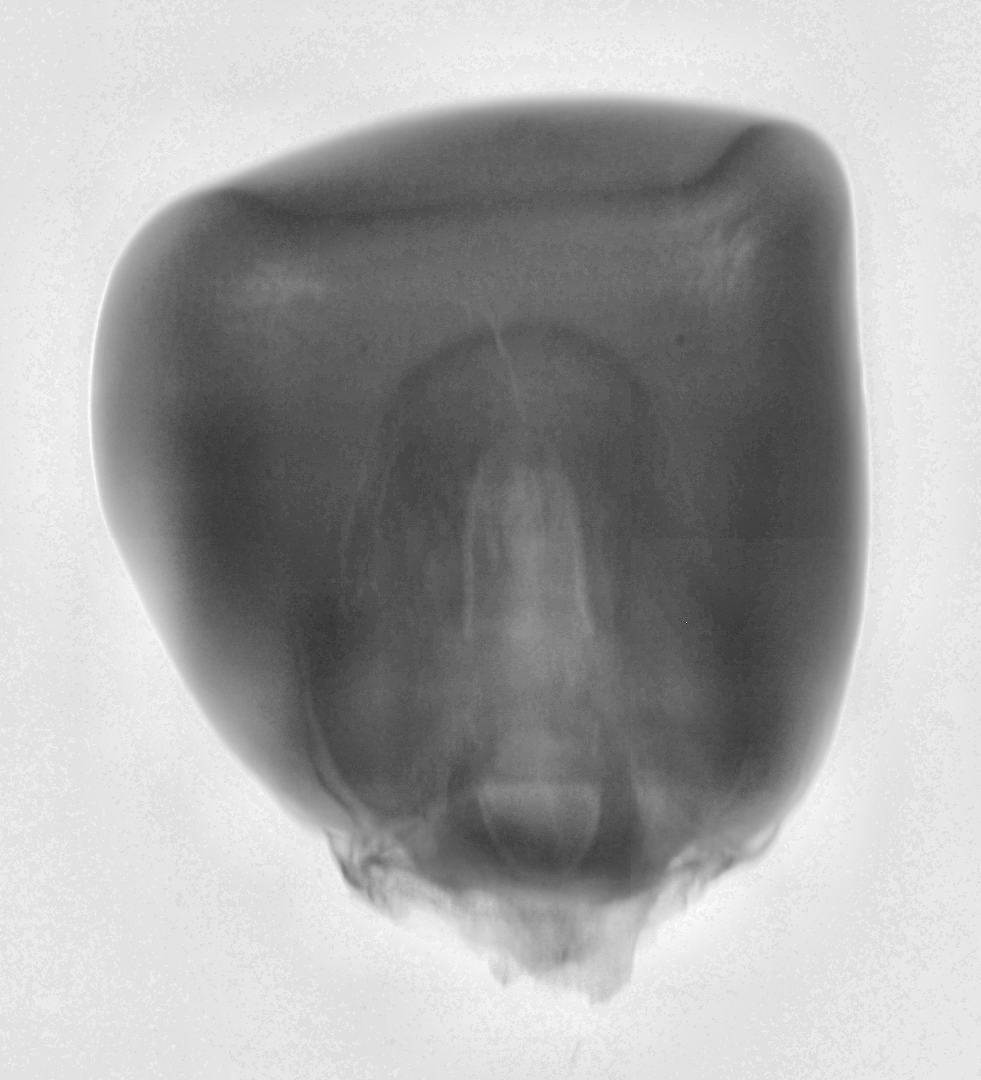
February 2015, Ronald Michaels, Technical Director, presented the company's vision for the
imaging and analysis of internal corn seed morphology at the
Seed Biology, Production and Quality 2015 course
held at UC Davis. See Ron's presentation here.

January 5, 2015, Dan McDonald presented "Alternative Approaches to Cotton Seed Germination Under Low Moisture Conditions"
at the Beltwide Cotton Conferences.
Click here
to see Dan's presentation.
Back to Top
2014 News

Tuesday, Nov. 18, 2014 and Wednesday, Nov. 19, 2014 Dan McDonald was the morning speaker at the Fertility of the Minds
workshops held in Calgary and Edmonton, Canada. Dan presented "Studying and Understanding Root Architecture: the 5 W's How?"
to Canadian growers. Click here
to read the report.
Back to Top
2013 News
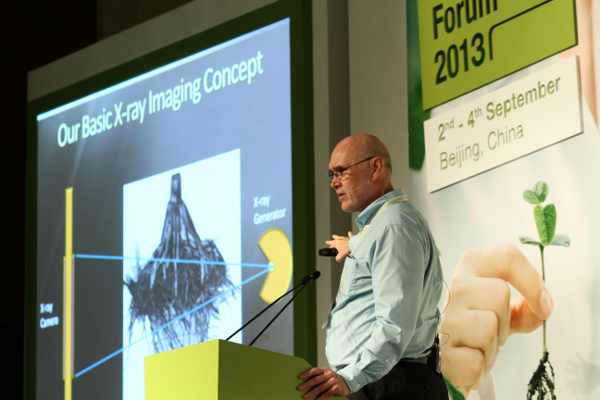

2013 Global Root Health Forum,
hosted by Syngenta . On September 2-4 more than 125 technical experts from 25 countries worldwide met in Beijing, China,
to discuss the latest research findings and innovations related to Root Health. According to Syngenta's
press release "Root Health research offers untapped potential for valuable discovery and innovation by studying the multiple
factors and complex interactions impacting root growth. Syngenta sees healthier roots as leading to better crop performance
and stress tolerance, resulting in increased, more stable yields." PSC President Dan McDonald delivered an invited
presentation, a poster, and sat on a discussion panel.
Dan's presentation is available as a ppt
(with animations) and as a pdf.
Dans poster is also available.

May 11, 2013, "The challenge of
putting the characteristics of a root into a single number - An interview with
Dan McDonald, president and co-founder of the Phenotype Screening Corporation". Read article at
SeedQuest
or explore Global Root Health Network group on
Linked in (registration required).

January 2013. Phenotype Screening Corporation President Dan McDonald
presented at the 2013 Beltwide Cotton Conferences January 10, 2013.
The title of Dan's presentation is Nematode Susceptibility Rankings From
Soft-Tissue X-Ray Imaging. Click here
to see the presentation.
Back to Top
2012 News

Web based service Teknovation.biz has a feature article entitled
Phenotype Screening proud to be the “root lab.” Click here
to see the article.
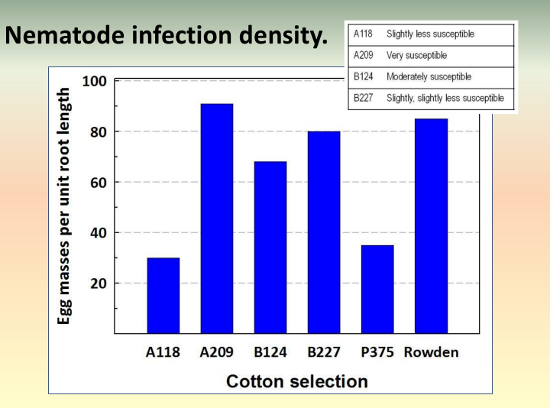
August 2012. Dr. Ernest Bernard, Professor, The University of
Tennessee, Entomology and Plant Pathology Department Made a
presentation to the Society of Nematologists Meeting, August 12 -16, 2012
Savannah, GA, entitled X-RAY IMAGING OF ROOT SYSTEMS INFECTED WITH
ENDOPARASITIC NEMATODES. Click here to see the presentation.

July 2012. Phenotype Screening Corporation received Notification of
Peoples Republic of China Patent Registration Title: Plant Root
Characterization System, Application No: 200680015951, issued July 5, 2012.
Click here and search by Application Number: 200680015951.
February 2012. Phenotype Screening Corporation President Dan
McDonald presented at the Southern Branch, American Society of Agronomy meeting
in Birmingham, Alabama, February 5 - 7.
Click here
to see Dan's Presentation: "Field Harvested Maize Root Architecture Comparisons
under Different Treatments and Tillage Conditions using Soft Tissue X-Ray
Imaging."

The above maize root systems are typical of Field Harvested, washed, and x-ray imaged root systems.
Back to Top
2011 News
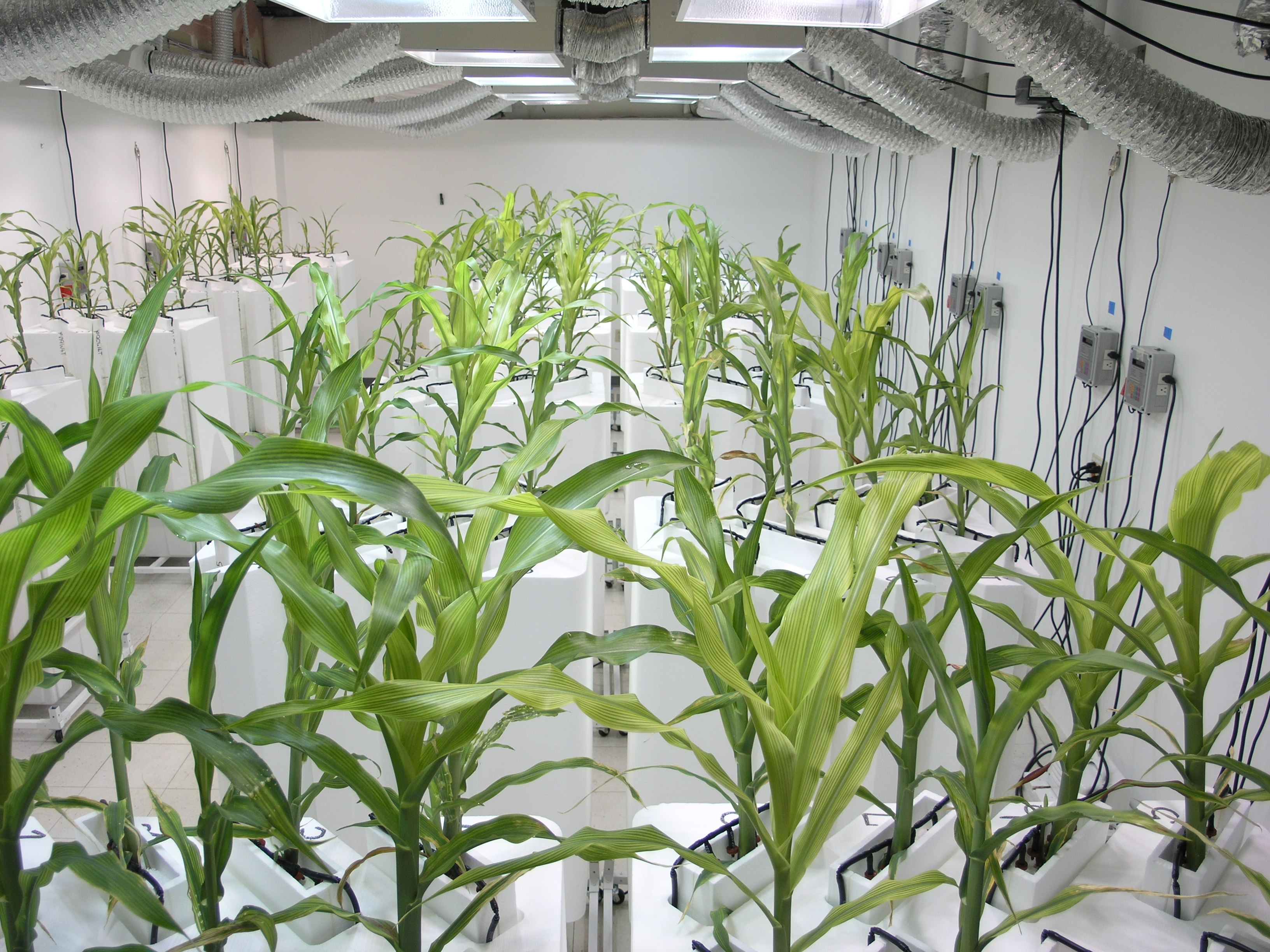
December 2011. Phenotype Screening Corporation root lab
expanded to a capacity of 160 corn plants in one meter deep
containers.
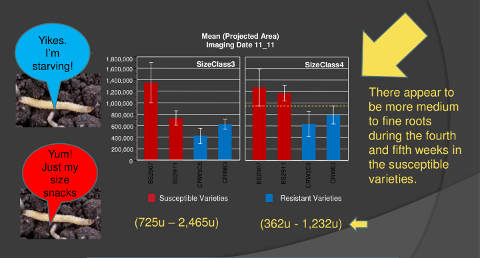
October 2011. Phenotype Screening Corporation President Dan McDonald
made a presentation at the Crop Science Society of America International Annual
Meeting in San Antonio, TX, October 16 – 19, 2011. The presentation
was to be made by first author Kenton E. Dashiell, Tropical Soil Biology and
Fertility (TSBF) Institute of the International Center for Tropical
Agriculture; however, Ken was unable to attend as planned. Click here
to download this presentation. This is the first public result using Phenotype
Screening Corporation's new Automated Analysis Software, RhizoTraits.
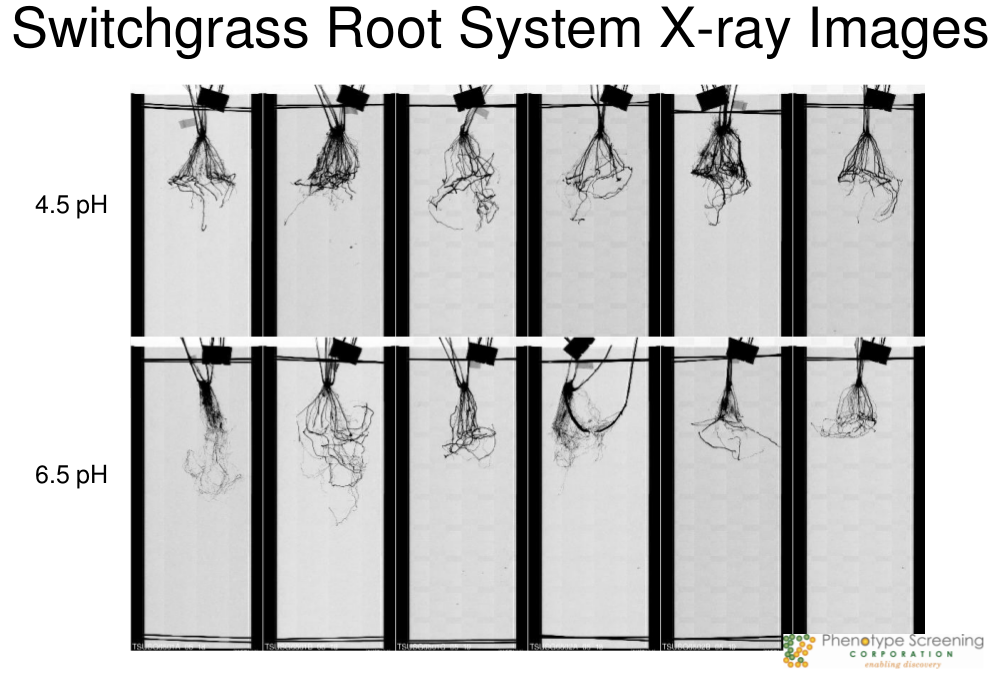
May 2011. Professor Emanuel Dzantor has graciously allowed us to
show the results of an architectural analysis of washed roots study that we did
of Prarie Grass.
The below image shows Root System Architecture (RSA) Signature for
Total Root Length. The blue bars are for plants grown in
pH 4.5 conditions. The red bars are for plants grown in
pH 6.5 conditions. This allows a quick comparison of plants under
different treatments.
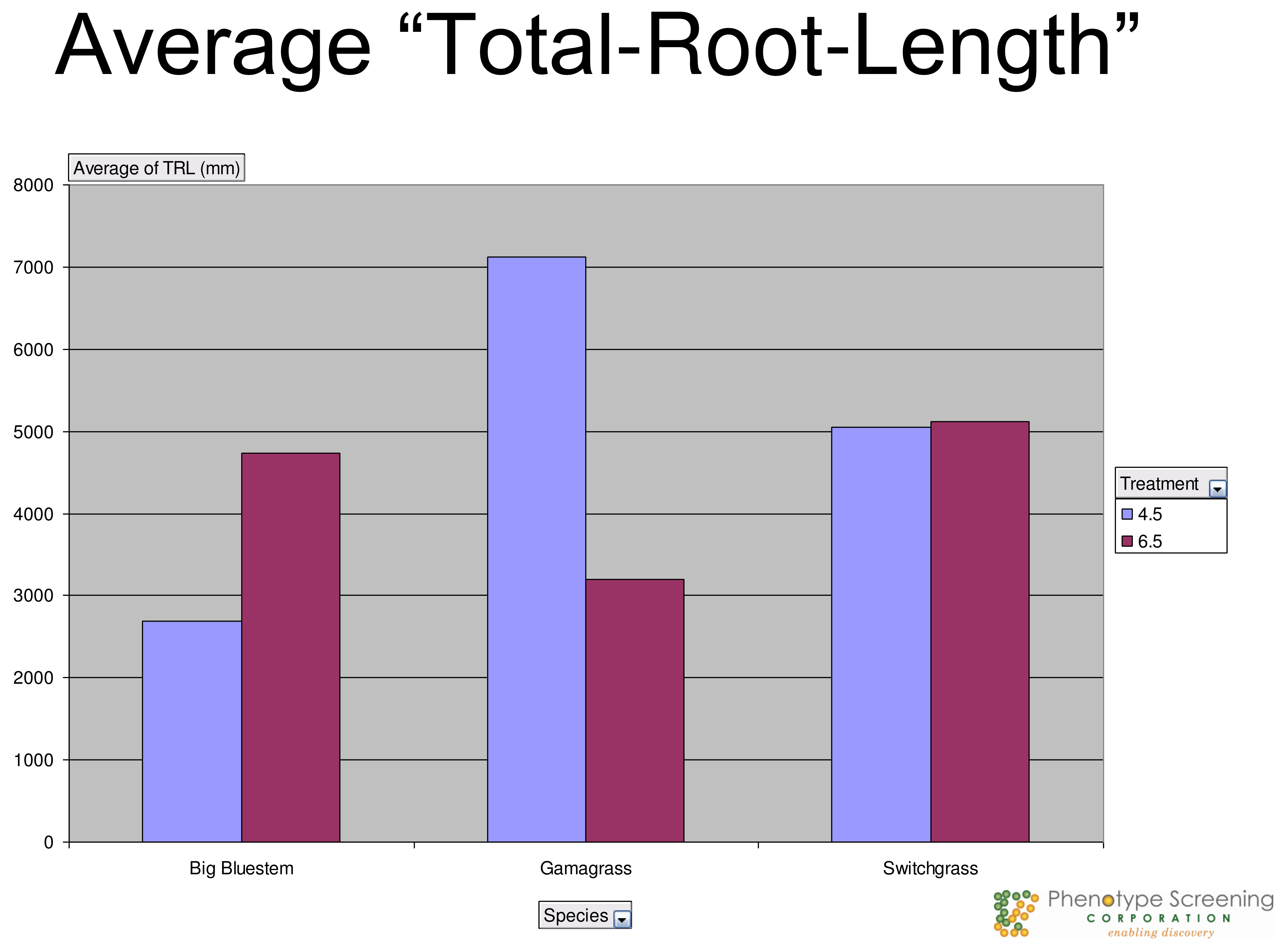
Click here to see results of
Phenotype Screening Corporation's study.
March 2011. Phenotype Screening Corporation has been awarded a
Tennessee Technology Development Corp. grant for the commercialization of our
Advanced Plant Characterization for Crop Improvement software. The
purpose of this software is to segment and analyze x-ray images of plant root
systems in order to provide information about root size, root mass
distribution, root angle and other information of interest to researchers.

Please contact us, for further details of this
now complete project.
Back to Top
2010 News
President Dan McDonald presented a poster at the 5th International
Symposium of Physiological Processes in Roots of Woody Plants August 8,
2010.
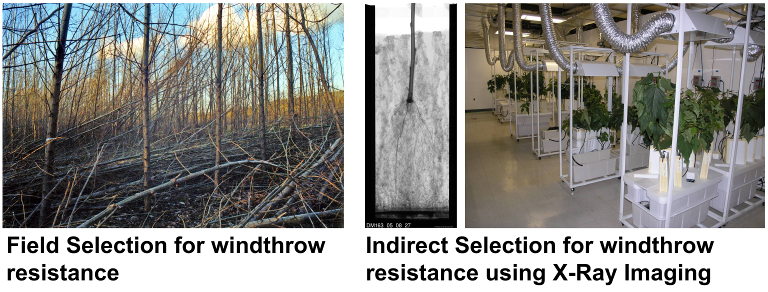
Poster entitled entitled "Windthrow Resistance Screening Based on
Non-destructive, Low Energy X-Ray Imaging of Early Root Emergence from Poplar
Hardwood Cuttings".
Click
here to download the poster.
Phenotype Screening Corporation President Dan McDonald participated
in the Digital-Imaging-of-Roots-In-situ Workshop 5th International Symposium of
Physiological Processes in Roots of Woody Plants August 8, 2010.
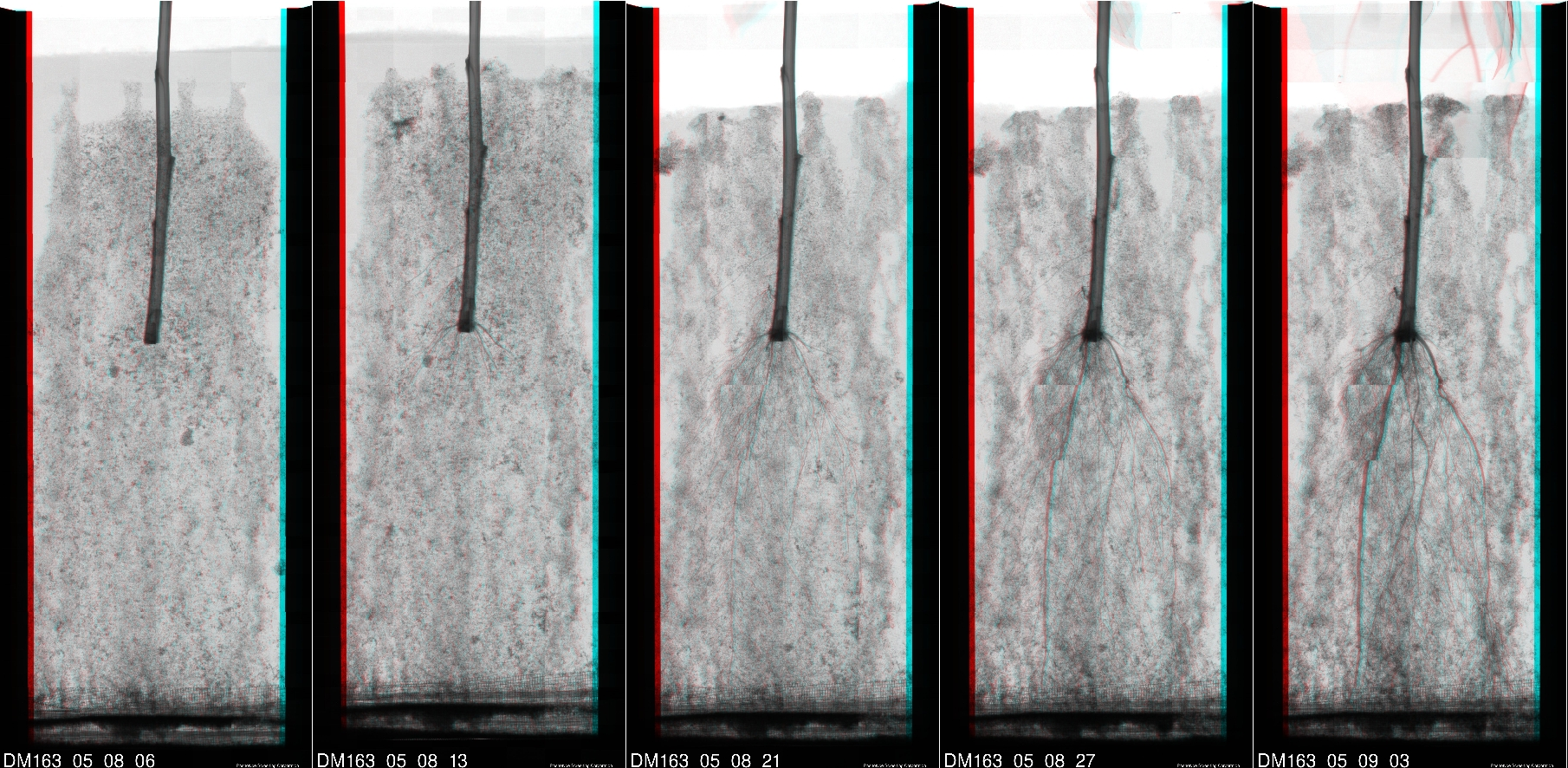
Dan presented our vision of root imaging and analysis. Click here to download
Dan's slides.
Back to Top
2009 News
Lisa D. Zachary, University of Tennessee, Knoxville published her
Honors Thesis Project "Nutrient delivery system for phenotype screening
corporation." Phenotype Screening Corporation participated under a
Department of Mechanical, Aerospace and Biomedical Engineering Senior Design
program in March 2009. Her collaborators in the Senior Design program were
Haley Baker and Meredith Neal. The project was supervised by Dr. Don Daring.
Click here to
download Lisa's Thesis.
Phenotype Screening Corporation Chief Scientist Delivers
presentation and poster at Plant & Animal Genomes XVII Conference,
January 10-14, 2009. Click here to
download slides. Click here
to download Poster.
Back to Top
2008 News
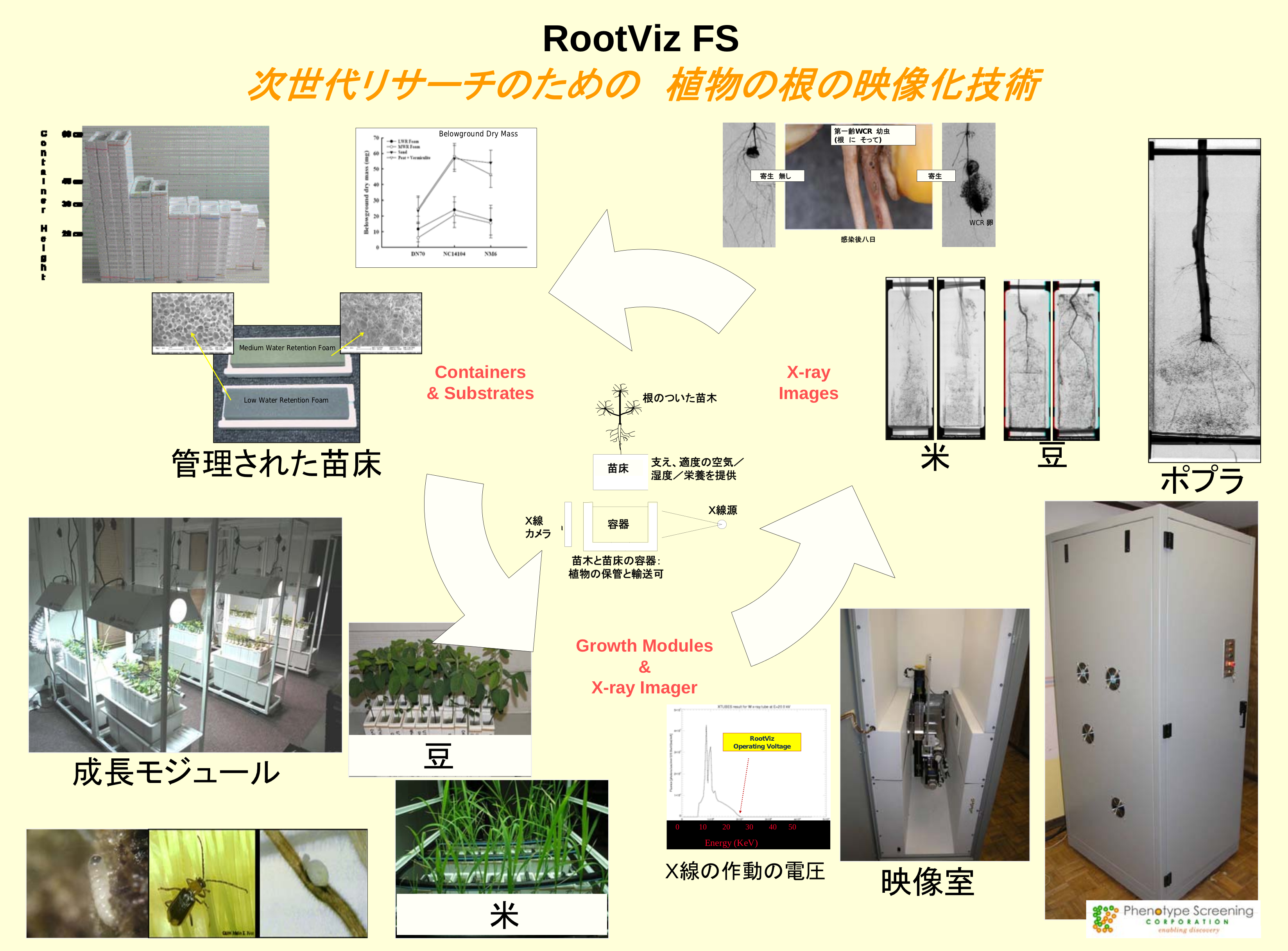
Phenotype Screening Corporation President Dan McDonald made a
presentation at the Japan Analytical Instruments Manufacturers’
Association(JAIMA) Expo 2008 Japan. Click here to
download the presentation (in Japanese).
Robert Kodrzycki, Chief Scientist, Phenotype Screening Corporation,
delivered a keynote address to the 5th International Symposium on Adventitious
Root Formation held June 16 - 20, 2008 at Alcalá de Henares, Madrid, Spain.
Click here to
download Bob's slides.
Back to Top
2007 News
The United States Patent and Trademark Office has granted a Patent
to Phenotype Screening Corporation.

U.S. Patent 7,278,236 B2, Plant Root Characterization System issued Oct. 9,
2007.
Click here to
download US Patent.
Alexander L. Friend of the USDA Forest Service made a
presentation entitled Below ground management of trees: novel perspectives on
imaging at the American Society for Horticultural Science on Monday, July 16,
2007. A portion of this presentation described work done by the Forest Service
in collaboration with Phenotype Screening Corporation as a part of a Phenotype
Screening Corporation USDA SBIR PhI project. Download presentation.

Phenotype Screening Corporation wins R&D 100 Award.
July 1, 2007, R&D Magazine has
announced its 2007 R&D 100 Awards. One of the winners is RootViz FS, the
x-ray based plant root visualization method developed by Phenotype Screening
Corporation. This award is presented annually by R&D Magazine to the 100
most technologically significant products introduced into the marketplace over
the past year, as determined by an independent judging panel and the editors of
R&D Magazine. The winning of an R&D 100 Award provides a mark of
excellence known to industry, government, and academia as proof that the
product is one of the most innovative ideas of the year.
Back to Top
2006 News
Dan McDonald presents poster at International Poplar Symposium
held in Nanjing, China June 5th through June 9th, 2006. The poster
entitled Poplar Root System Characterization for Next Generation Root Research
discussed planned research activities under PSC's recently awarded USDA SBIR
program. Please contact us for a copy.
Dr. Fred Allen, The University of Tennessee, presented a
paper at the American Society of Agronomy meeting in Orlando on Tuesday, 7
February 2006 entitled X-ray Based Soybean Root Visualization and
Characterization, by Fred Allen, Dan McDonald, Richard Johnson and Ronald
Michaels. Please contact us for a copy.
Back to Top
2005 News
Phenotype Screening Corporation was featured in the May 2005 issue
of Vision Systems Design. Phenotype Screening Corporation's Technical
Director, Ron Michaels, describes the x-ray technology behind our plant root
visualization system. Click here.
Back to Top
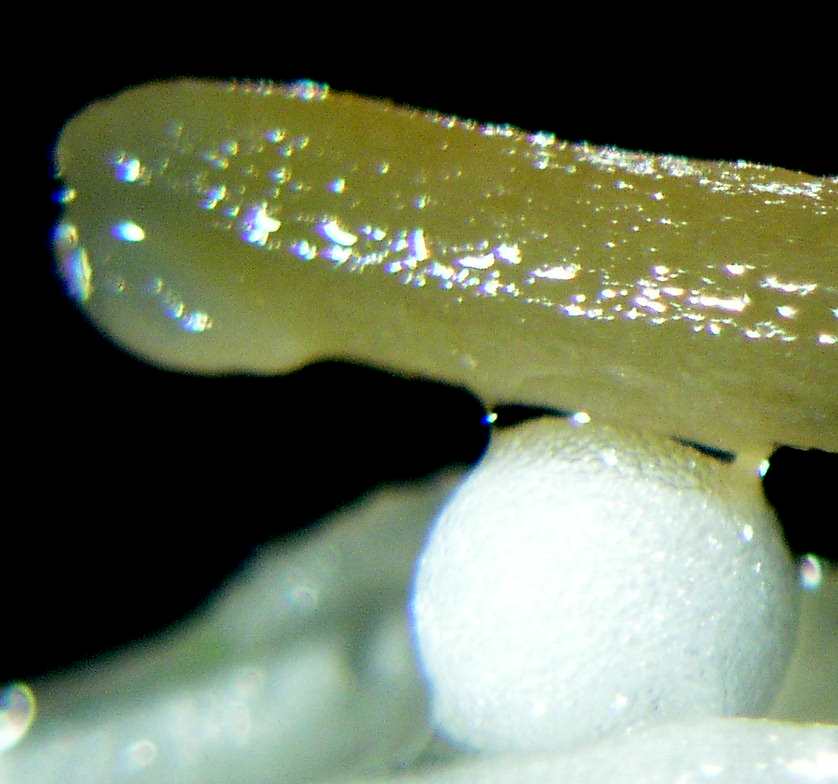


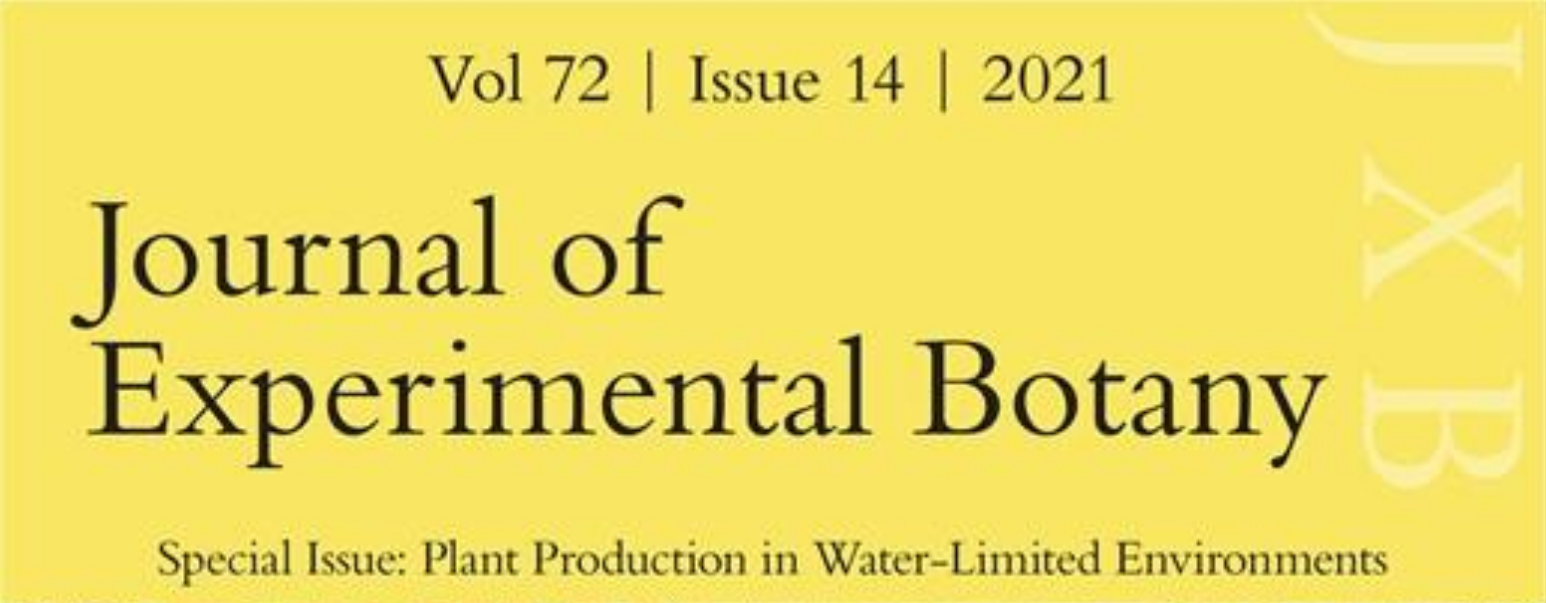
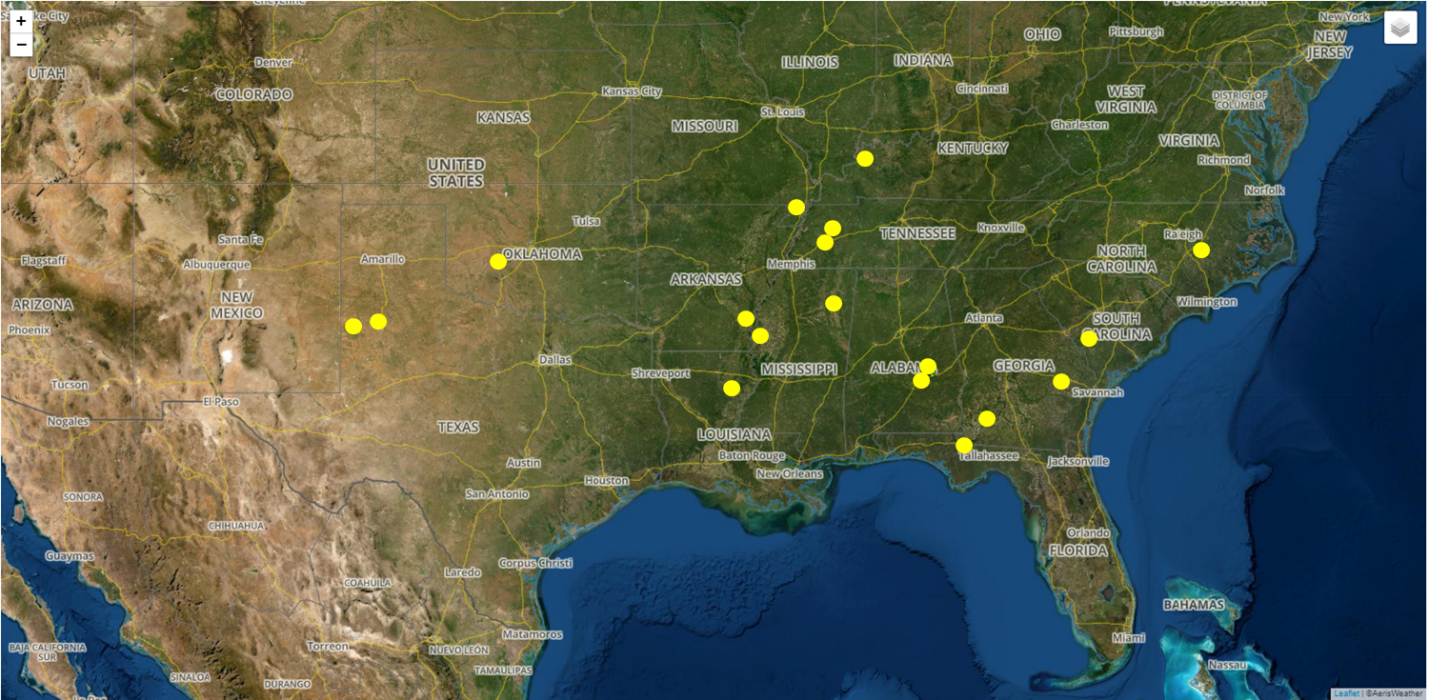

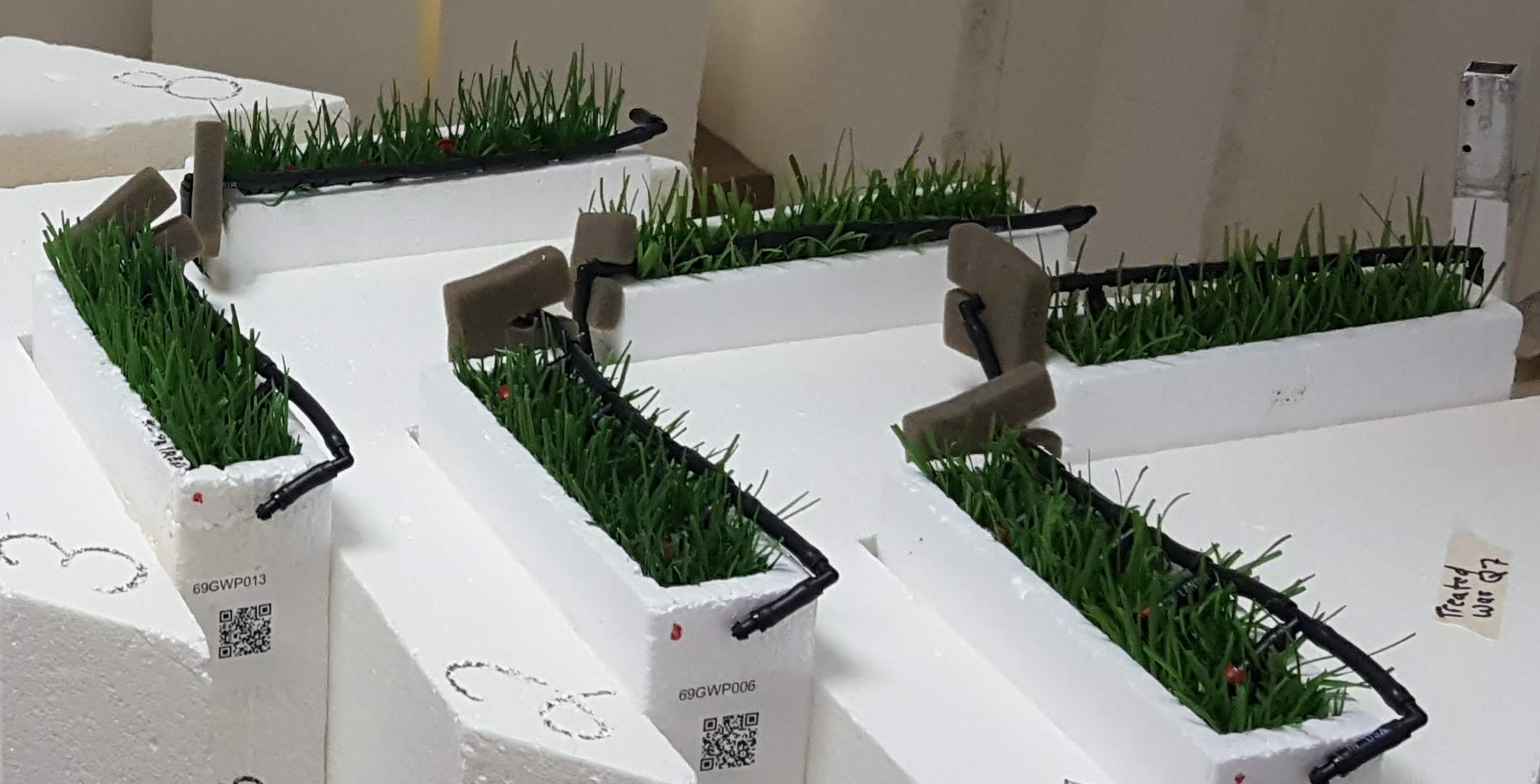
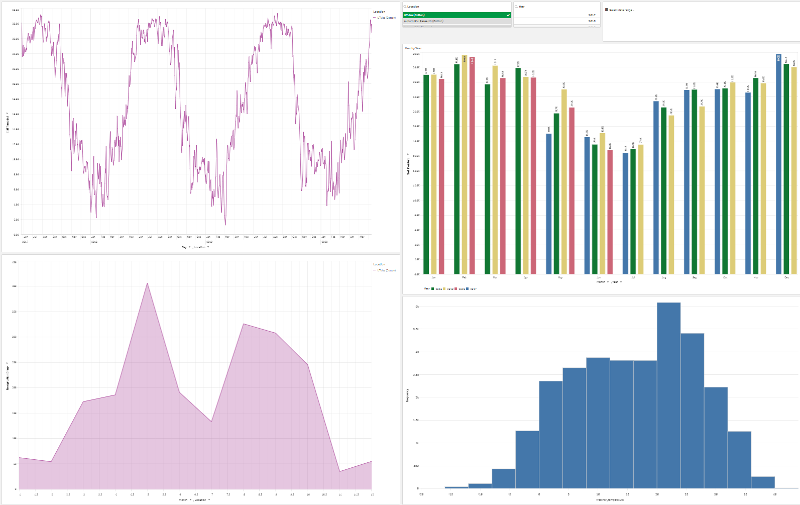
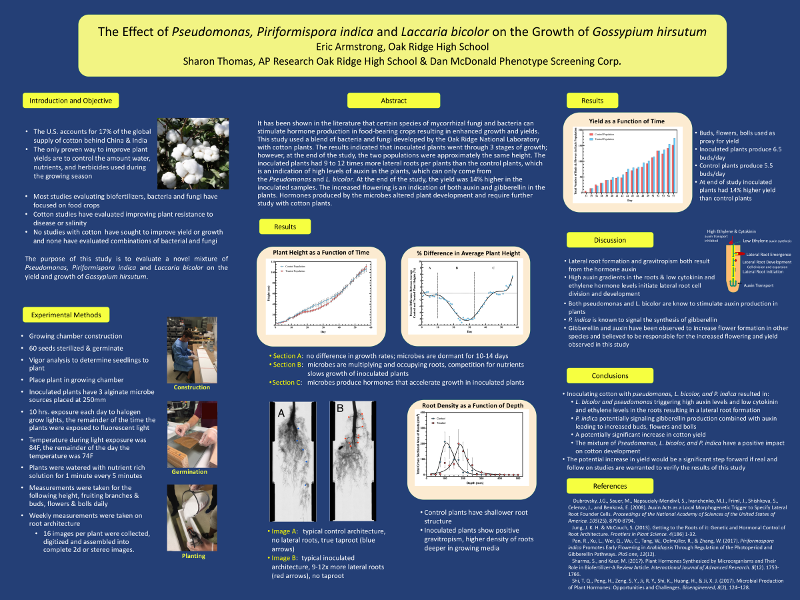
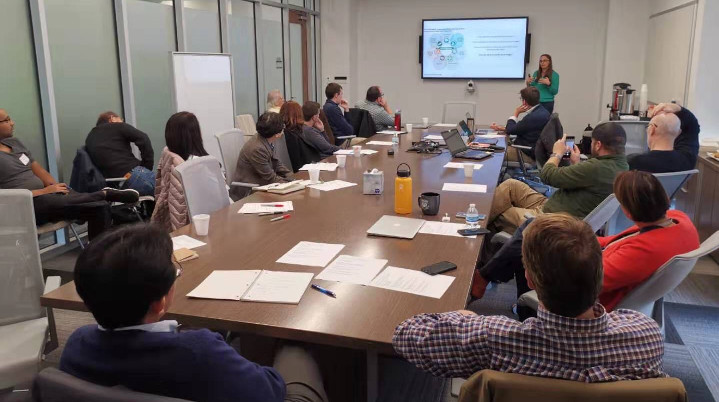
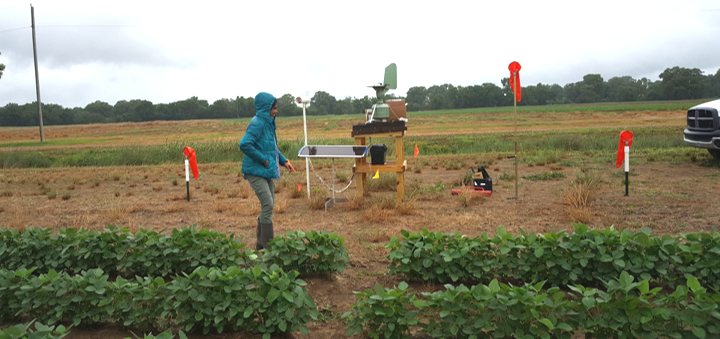
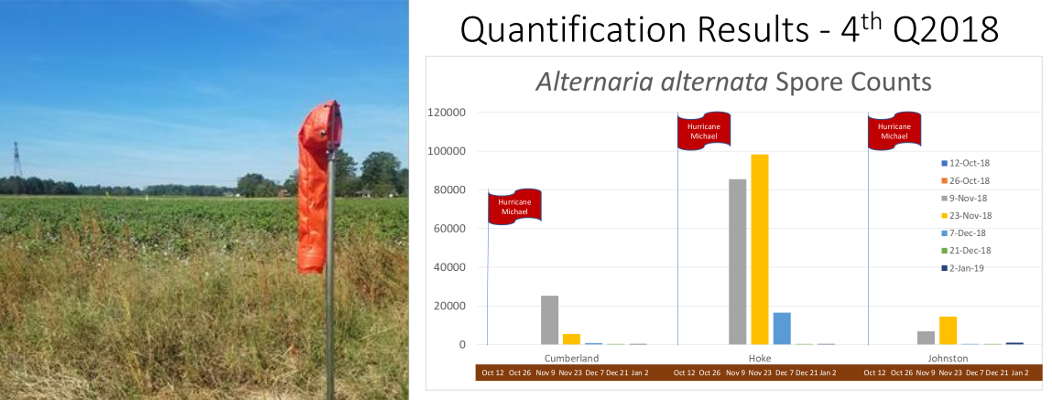
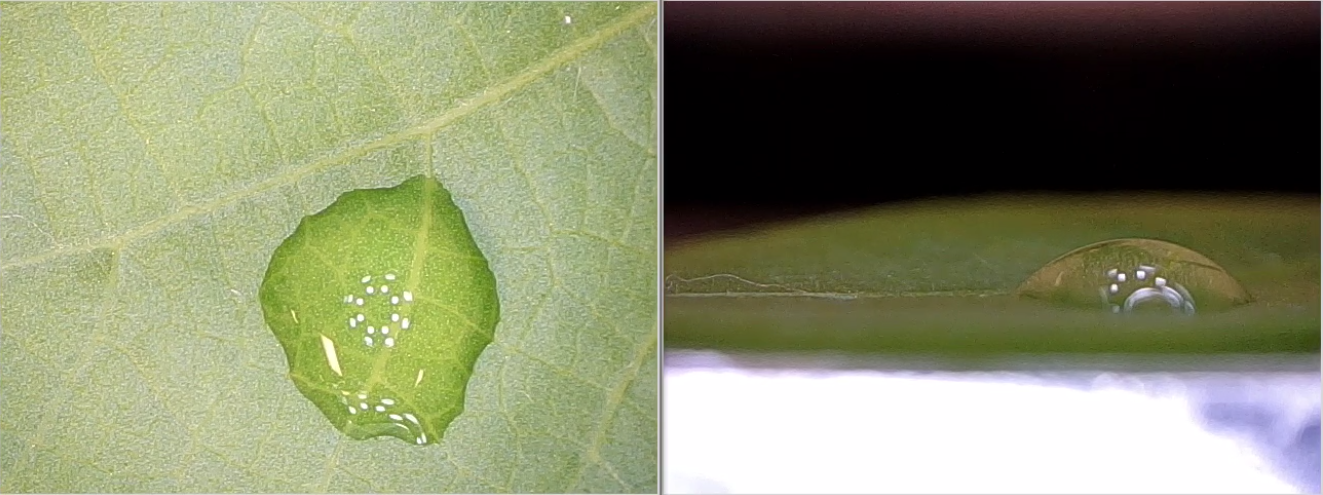 treatment only, no surfactant on cotton leaf
treatment only, no surfactant on cotton leaf
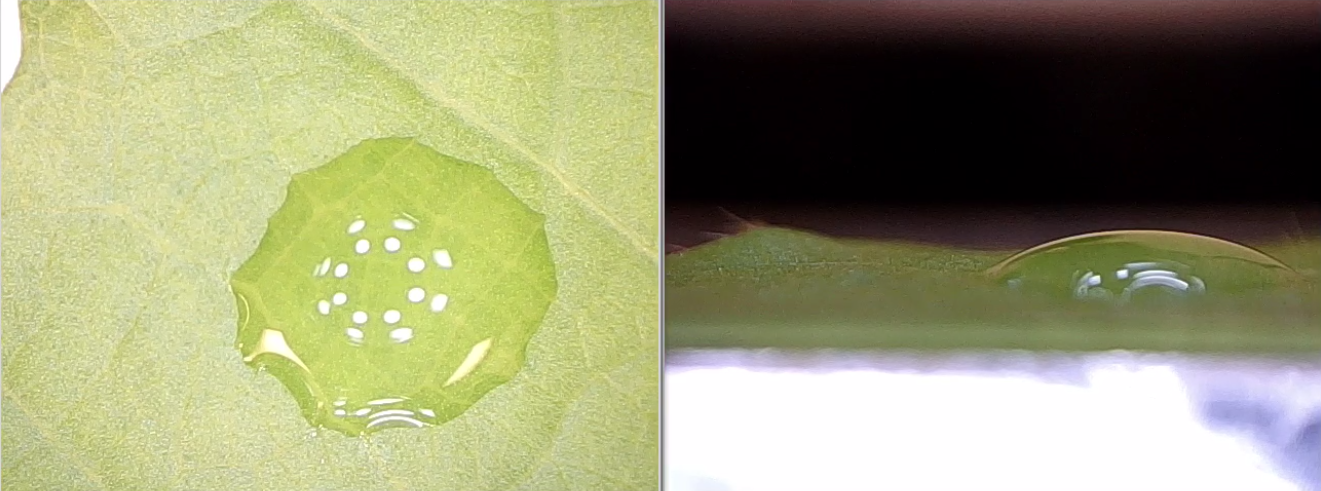 treatment with surfactant "C" on cotton leaf
treatment with surfactant "C" on cotton leaf
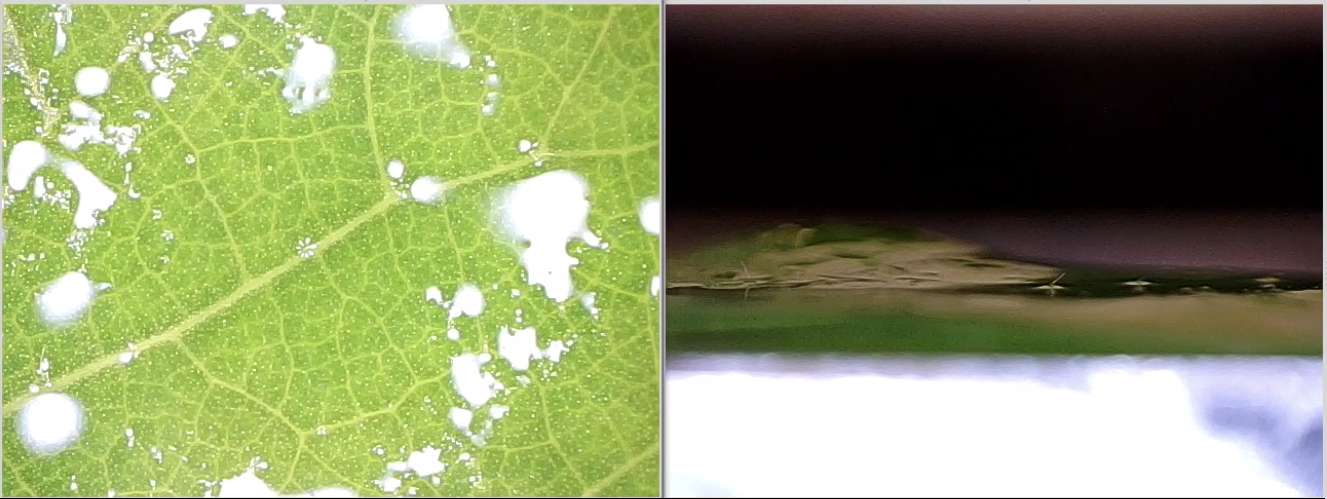 treatment with surfactant "K" on cotton leaf
treatment with surfactant "K" on cotton leaf





















